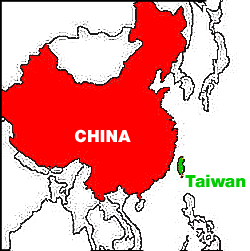The Regional Language Differences Between China and Taiwan
As you make your way across the United States, you will hear similar words with different meanings. For example, if you are on either of the coasts, the word dinner means the last, and often largest, meal of the day. However, to older generations in the south or Midwest, dinner means the largest middle meal of the day, while supper refers the last meal of the day. These regional differences, which can result in entirely different dialects over time, are common to most nations in the world. The People’s Republic of China (PRC) and Taiwan are no different. While the basic spoken language is the same, Mandarin, there are slight variations in pronunciation and word use, and the written languages vary as well.

3 Differences Between Chinese in the PRC and Taiwan
It’s important to note that the differences between Chinese in the PRC and Taiwan are not dramatic. If you are familiar with one, it will be easy to transition to the other. That being said, there are some basic language differences between China and Taiwan that boil down to pronunciation, variations in word usage, and the way the characters are written. Both countries speak Mandarin Chinese, derived from the Beijing dialect. However, when Taiwan split politically from mainland China back in 1949, there was a virtual lack of communication that ensued throughout the cold war period. It’s this absence of communication that caused the linguistic differences we see – and hear – today.
Pronunciation
For those who are not familiar with Chinese, or are just learning, the pronunciation differences would hardly be noticed. However, for those who are from the PRC, Taiwan, or are fluent in Chinese, the pronunciation differences are noticeable. They are not enough to hinder comprehension, but they are strong enough to demonstrate whether you are from mainland China or Taiwan, where you studied, or perhaps where your main instructors were from.
The most noticeable differences occur between what are called the retroflex initials (zh, ch, sh, r) versus their non-retroflex counterparts (z, c, and s). In the PRC, there is an obvious difference in the way the retroflex and non-retroflex initials are pronounced. In Taiwan, this difference is much less noticeable, for example the sh and s sounds are almost identical.
Chinese Characters
If you had to guess whether the Chinese characters are more traditional in mainland China or Taiwan, which would you guess? It might surprise you that the most traditional characters are written in Taiwan, whereas most writing on the mainland is done using a simplified version. While formal texts in China may still use traditional characters, most everyday professional, business, and literature-based texts uses the simplified form. This makes it difficult for those who learn Chinese in the PRC to write “correctly” in Taiwan. However, most Taiwanese people will be able to read simplified characters.
Words
You will notice a slight difference between spoken Chinese in the PRC and Taiwan as well. An anecdote from an article in the BBC shares how a Taiwanese professor was a little surprised when he was offered a “coffee companion,” which means “cream” in China. Or menus that offer sliced “tu dou,” which means potato in China, but peanut in Taiwan. These slight differences would certainly give a fluent speaker pause from time to time, but won’t have a negative effect on casual conversation.
And, that is the gist when it comes to the difference between Chinese in the PRC and Taiwan; while it won’t cause any major communication gaffes while traveling for pleasure, it’s important that business documents and professional translations are done with care so they are error-free.






